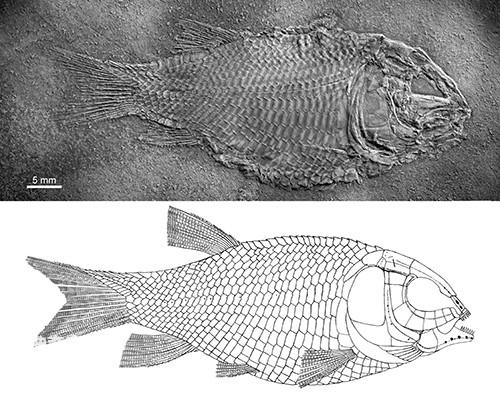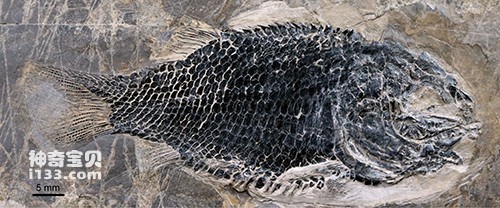Recently, researcher Xu Guanghui of the Institute of Vertebrate Paleontology and his graduate students Ma Xinying and Ren Yi published the latest research results on Triassic fishes in Yunnan and Guizhou in the American magazine "PeerJ". The paper describes in detail a new articulated fish that coexists with Guizhouosaurus, and names it Wang's Fuyuan fish. This is the first discovery of an articulated fish fossil in the Latin Period strata of the Middle Triassic in my country.
As early as 1957, Mr. Hu Chengzhi of the China Geological Museum conducted a field geological survey from Yunnan to Guizhou and discovered a marine reptile fossil in a small mountain village called Lvyin Village in Dingxiao Town, Xingyi City. In 1958, it was named Guizhouosaurus Hu after research by Academician Yang Zhongjian of the Institute of Paleontology. Over the next sixty years, while a large number of marine reptile fossils were collected in this area, many fish fossils were also discovered. In addition to vertebrates, there are also invertebrates such as arthropods, ammonites, and bivalves. Scientific researchers collectively call them Guizhou dragon fauna or Xingyi biota. Biostratigraphic research has determined that the age of the Guizhousaurus fauna is the Latin Period of the Middle Triassic, with an absolute age of approximately 240 million years ago. Guizhousaurus fauna is widely distributed at the junction of Yunnan and Guizhou, and has been found in Xingyi and Anlong of Guizhou, Fuyuan and Luoping of Yunnan. The hinge-tooth fish named by Xu Guanghui's research team this time is mainly based on 22 complete fossil specimens, most of which were found in the Shibalian Mountains of Fuyuan, Yunnan. Therefore, the genus was named Fuyuan Fish according to the place name. The species name is dedicated to Mr. Wang Kuan for donating two exquisite fish fossils from his personal collection to the Institute of Vertebrate Paleontology.
The discovery of Fuyuanichthyus Wang made up for the lack of fossil records of the Middle Triassic Latin period arteriodon fishes in my country, and provided more information for the study of the skeletal morphology and ecology of early arterodont fishes. The gar, which lives in the freshwater environment of Central and North America and Cuba, is called a living fossil and is a living representative of the hinge-toothed fish. As an important branch of holobony fishes, arteriodontids began to develop rapidly in the Triassic. Their earliest fossil records come from the Luoping and Panxian biota of the early Middle Triassic (Annisian). The species are represented by Trichoderma spp. and St. George's fish. Xingyi Asian lepidodontids were previously classified as articulated fishes, but according to the latest research by Xu Guanghui's research team, it belongs to another branch of holoostous fishes, near herrings. Wang's Fuyuan fish has typical characteristics of hinge-tooth fish, such as two infraorbital bones in front of the orbit, a relatively short mandible, and obvious spines on the dorsal scales in front of the dorsal fin; at the same time, it has a laryngeal plate bone and a short maxilla. It has no teeth and lacks auxiliary maxillary and supraorbital bones. These characteristics make it different from other hinge-toothed fishes. The results of cladistic research show that it forms a sister group relationship with Tongodon grazeri and is located together in the hinge-toothed fish. The base position of the class. Fuyuan fish is small in size and is one of the smallest whole-boned fishes. Its discovery further supports the hypothesis that in the Middle Triassic marine environment of South China, the overall body size of amniform fishes was smaller than that of near-herring fish.
This research received financial support from the National Natural Science Foundation of China, the Strategic Priority Science and Technology Project of the Chinese Academy of Sciences, the Key Frontier Science Project of the Chinese Academy of Sciences, and the Excavation and Repair of Paleontological Fossils.
Paper link: https://peerj.com/articles/6054

Figure 1: Homotype specimen and restoration of Fuyuan fish of Wang's family (Photo provided by Xu Guanghui)

Figure 2: Another complete specimen of Wang's Fuyuan fish (Photo provided by Xu Guanghui)
animal tags:
We created this article in conjunction with AI technology, then made sure it was fact-checked and edited by a Animals Top editor.